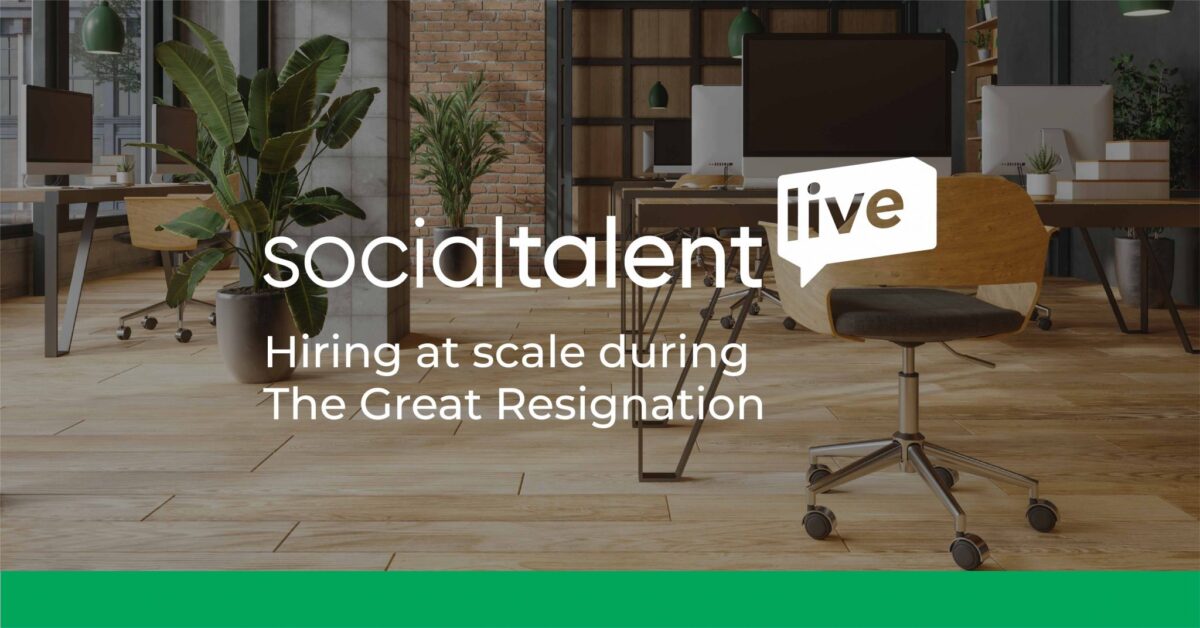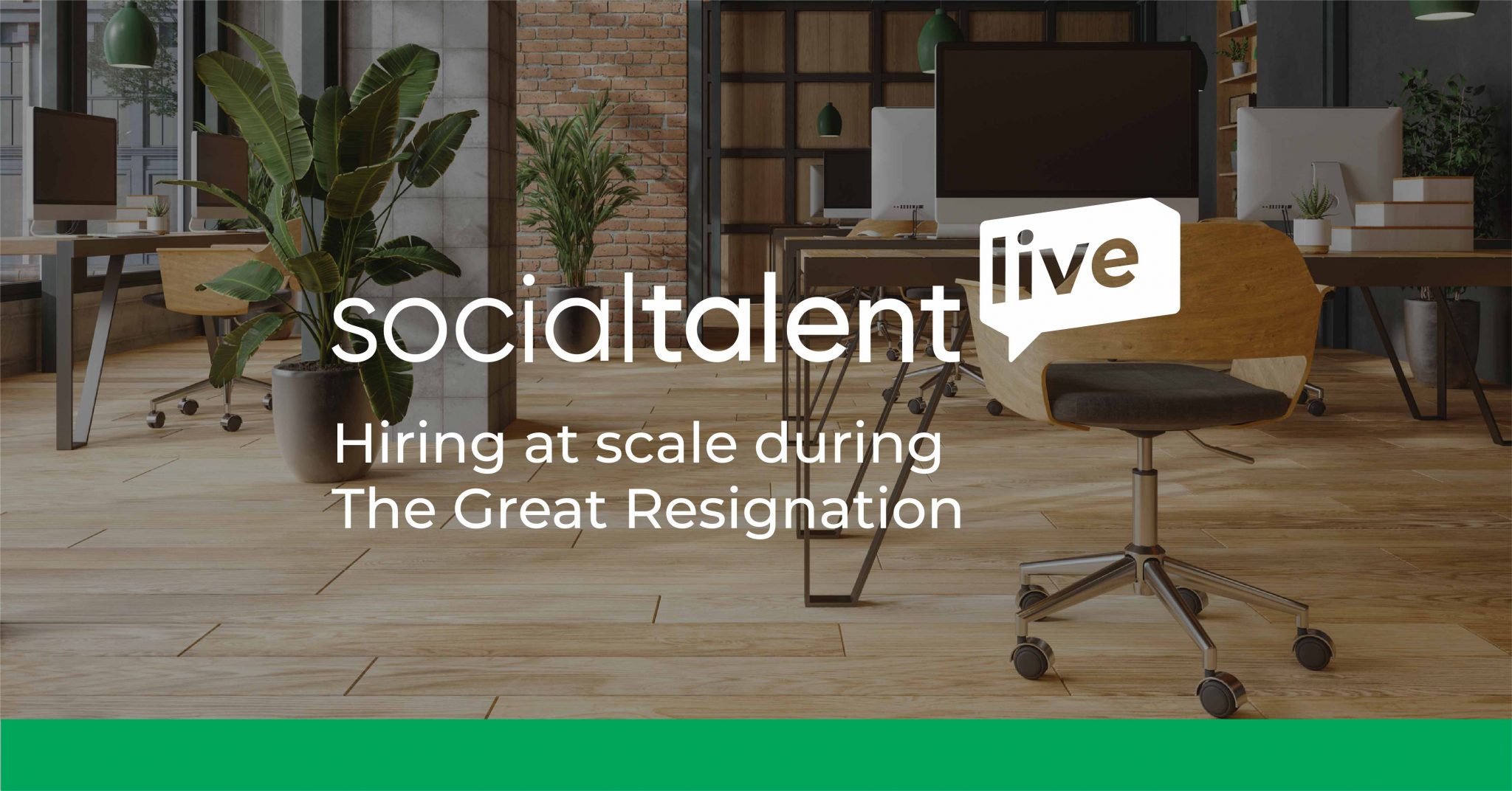
The Great Resignation has seen disengaged employees leave organizations in astonishing droves over the last ten months. Exacerbated by the COVID crisis and a desire for change, this phenomenon has signaled a marked alteration in how workers are viewing what is most important to them in their roles. As organizations and leaders look to understand the root-cause of this mass exodus, they are also scrambling to scale hiring. With record numbers of job vacancies, it’s becoming a herculean task for companies to not only fill these open positions, but find enough recruiters to actually facilitate this!
We recently hosted SocialTalent Live: Hiring at scale during The Great Resignation, an online talent leadership event dedicated to the discussion of this vital topic. We brought together leading talent engagement specialists, and HR and TA leaders from global companies such as WilsonHCG, Uber, NielsenIQ and Mambu to discuss what organizations can do to stem resignations and bolster retention, while at the same time ramping up hiring. Let’s take a look at some of the most striking insights from the event…
Want to watch the full event? Click here
What’s causing The Great Resignation?
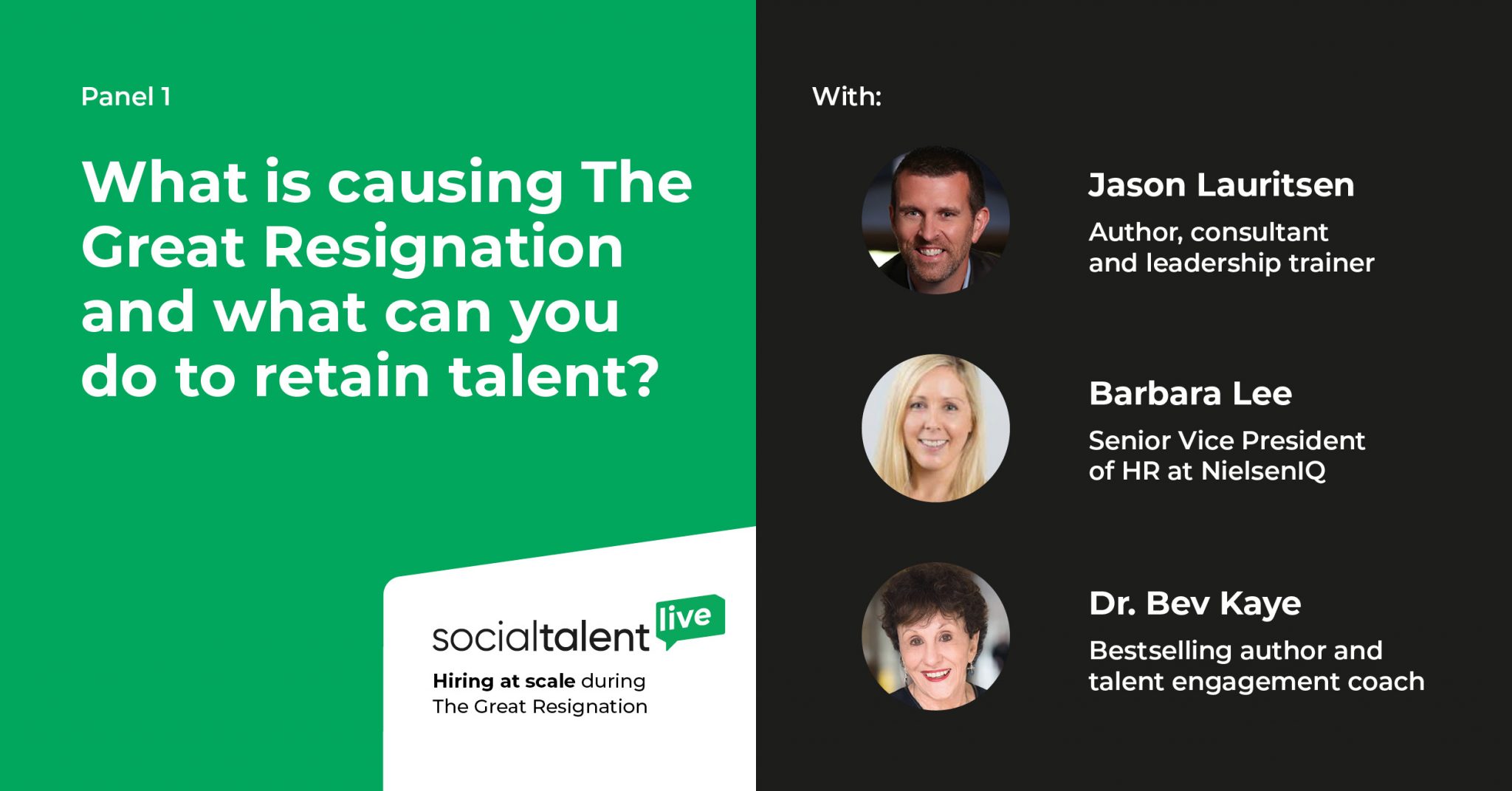
While the panel acknowledged that some of this phenomenon could be attributed to COVID lag, there was universal agreement that The Great Resignation is real. Barbara Lee, Senior VP of HR at NielsenIQ, mentioned that people are reevaluating what’s important. And whether this is the environment they want to work in or the career choices they make, it’s changing the dynamics of the job market. Dr. Bev Kaye echoed this, stating that “employees are searching for the career they really want.” But what can companies do to stem this attrition? According to Barbara, it comes down to “autonomy, career progression and variety.” Organizations must lean into this – while pay and benefits are important to a point, it won’t keep employees engaged forever. Bev advocated for “stay interviews” – open, transparent conversations managers need to have with direct reports to find out what really matters now.
Internal mobility also formed a large part of this discussion, with Barbara calling it the “lifeblood of companies.” She stated that authentic culture can only be built on shared norms and values, but also reinforced the importance of sustained time to allow this to flourish. So by not offering opportunities to grow and develop within an organization, you jeopardize a potential future for your talent.
And you only have to look at the cost of attrition to see how important it is to focus on your employees. The conversation ended with a hopeful take, however. Barbara believes that there is absolutely opportunity within The Great Resignation. Whether it’s the focus on different skills or virtual engagement, this is a moment for positive change too. While Bev’s call to be “an opportunity miner, rather than an opportunity whiner” was a perfect klaxon to inspire action and look at this situation from a new perspective.
Ramping-up recruiting through development strategies
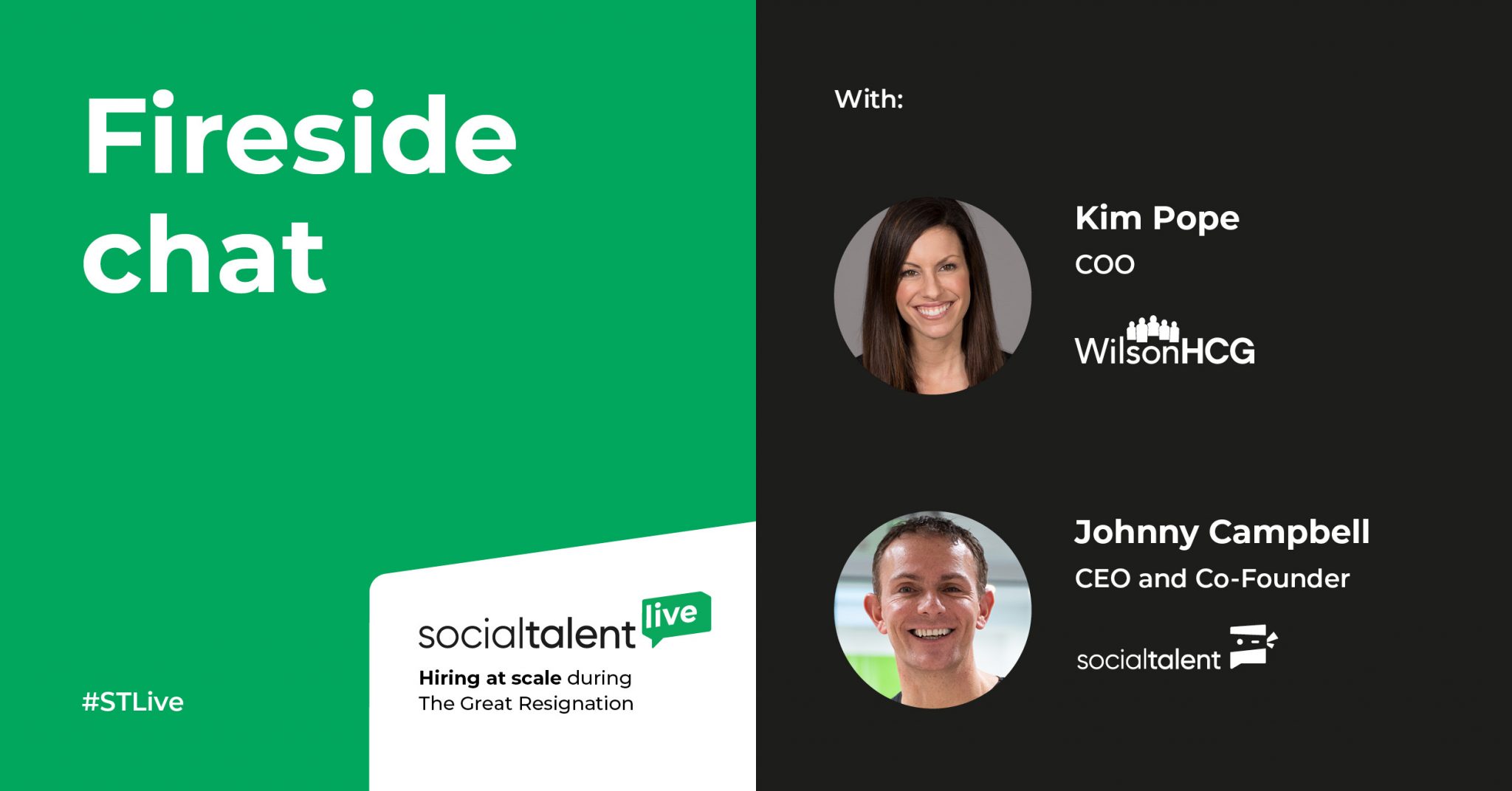
Kim Pope, the COO of WilsonHCG, joined Johnny Campbell for an intriguing fireside chat that examined The Great Resignation from a different angle. Being a global RPO has meant that this phenomenon has seen a lot of growth for WilsonHCG, as organizations look to scale hiring. However, internally, staff feelings echo that of employees everywhere. Kim mentioned that there has been a mindset shift as calls for flexibility and work/life blend have become more apparent. “We’ve had to reevaluate our locations,” Kim said, “and our typical operation routines in order to keep pace with the market and listen to our employees.”
In terms of what WilsonHCG is seeing from clients and customers, Kim stated that the “global consensus is that scalability is a challenge right now.” Everyone is having difficulty keeping up with demand. And companies are looking at the structure of TA in order to solve it. Even internally, WilsonHCG has doubled their recruitment team. But they’ve also put investment in other avenues, like sourcing academies, early career programs and reskilling initiatives. All activities designed to build and generate internal and external talent. And it’s here where success can be found. “Growth within an organization is key to why people stay,” Kim told us. Offering development opportunities, specifically in this case around recruiting, simultaneously allows you to scale when needed AND retain talent.
Scaling hiring and recruiter TLC
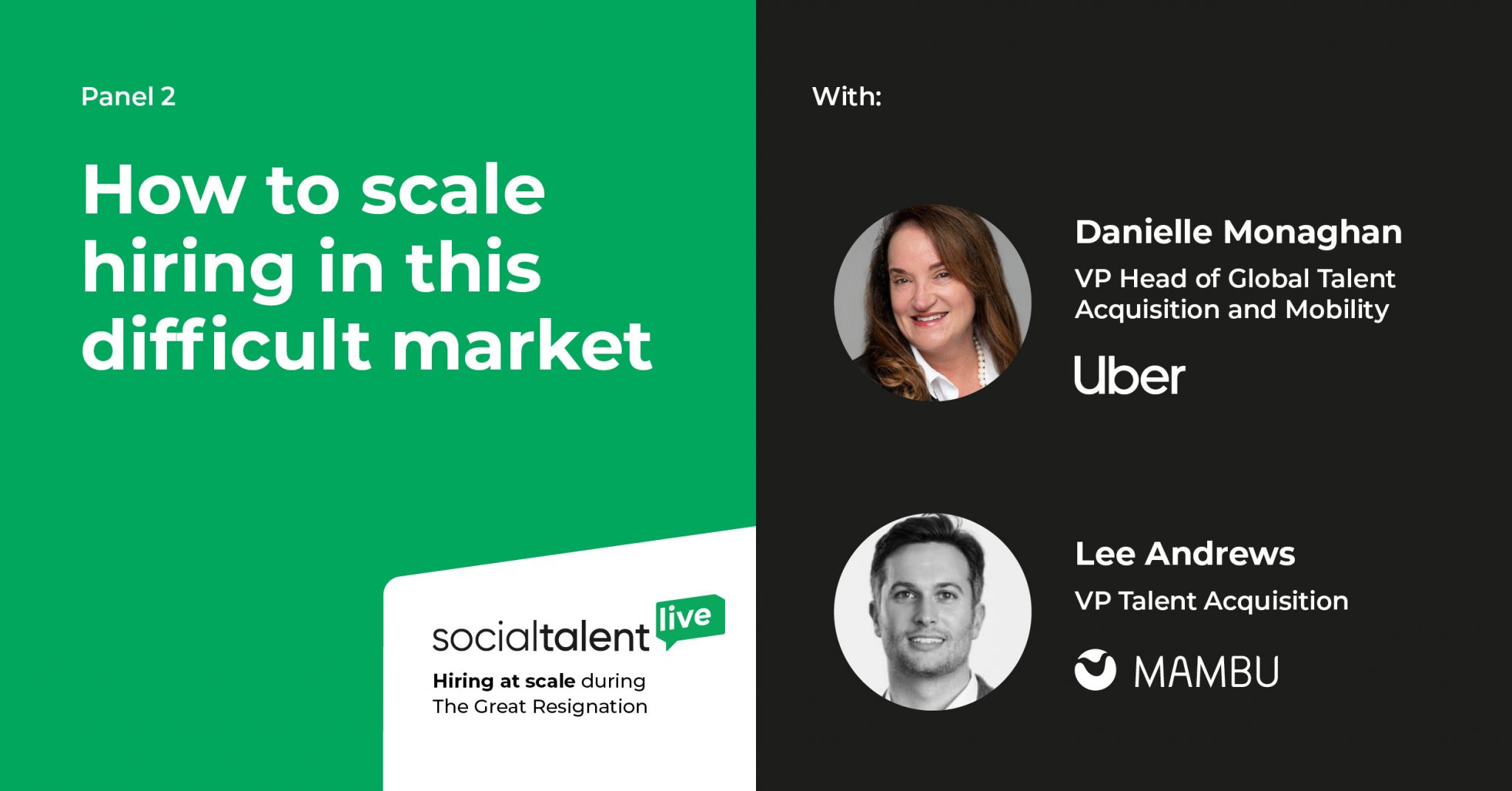
Our final panel looked at how companies are looking to scale their hiring efforts. Danielle Monaghan, VP Head of Global TA and Mobility at Uber, pointed out that in this ultra-competitive market, there is one thing in particular TA is grasping for – speed. “Speed is the silver bullet,” Danielle says. Getting candidates through the pipeline quickly, assessed well and up to offer stage first is of paramount importance. Lee Andrews, VP Talent Acquisition at Mambu, then built on this point, stating that you also have to ask yourself the big questions when hiring at the moment and pinpoint the exact problems you are trying to solve in order to increase your chance of success. He also drove home the point that you have to build your recruiting acumen company-wide and Danielle agreed with this, stating:
“Scaling is never a TA alone problem. Just like diversity is never a TA alone issue. It has to be a company priority.”
When it came to discussing the function of recruiting itself, given the huge demand on resources, burnout was cited as a real fear at the moment. To combat this, Danielle implores companies to “staff appropriately” in this regard. She is a huge proponent of changing the narrative with people leaders to see recruiting, not as a cost, but an incentive and something that needs to be invested in ahead of need. Lee agreed with this too, stating that often people “don’t understand what recruiter capacity is” and that data is the best argument to ensure this is correct. So whether it’s stats about the cost of candidates walking away at interview stage or an investment case made for team sizing, this kind of data can help inform decision-making and lower undue stress and requisitions for recruiters.
This is just a taste of the incredible insights shared at SocialTalent Live: Hiring at scale during The Great Resignation. To get the full story, you can watch a recording of the whole event here.
And don’t forget to join us on February 24th for our next SocialTalent Live event which will examine the role of psychological safety in DEI.
The post SocialTalent Live: Hiring at scale during The Great Resignation appeared first on SocialTalent.
